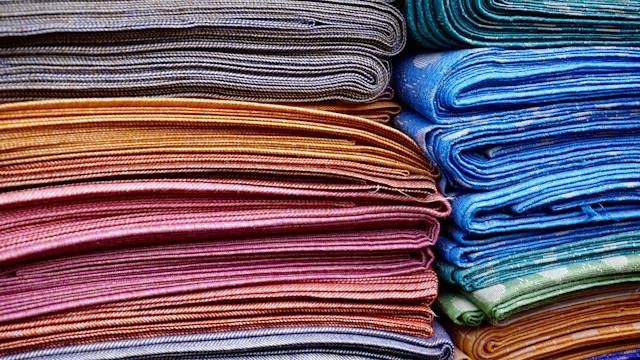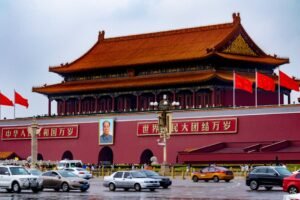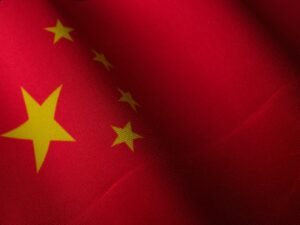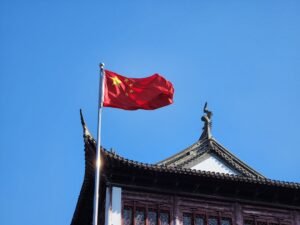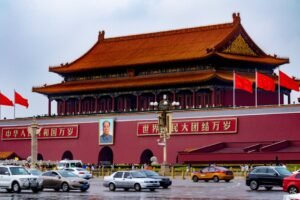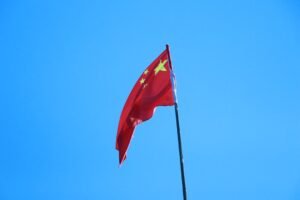Welcome to our exciting journey into the world of traditional Chinese clothing and fashion. Whether you’re a fashion enthusiast or simply eager to learn Chinese culture, you’ve come to the right place. In this section, we will dive into fascinating aspects of Chinese fashion by exploring its intricate vocabulary.
Chinese fashion is unique in various ways. From elegant silk robes to colorful embroidered shoes, traditional Chinese clothing has a rich history and holds deep cultural significance. By familiarizing oneself with the Chinese terms, you cannot only express fashion but also appreciate and respect its long-standing cultural heritage.
Let’s get started and discover the beauty of traditional Chinese fashion through its vocabulary.
Table of Contents
ToggleKey Takeaways
- Learning the Chinese terms related to traditional Chinese clothing and fashion is a fun way to explore the Chinese culture.
- Familiarizing oneself with the Chinese vocabulary related to fashion is an effective way to appreciate and respect the Chinese cultural heritage.
- Chinese fashion has a fascinating history and holds deep cultural significance.
- Exploring the Chinese fashion vocabulary will not only teach you new phrases and words, but it can also enhance your understanding of the Chinese culture.
- By learning Chinese terms for traditional fashion, you’re not only improving your Chinese language skills but also adding new dimensions in the appreciation of art, culture and aesthetics.
Understanding the Fundamentals of Chinese Clothing
Chinese fashion has a rich history dating back to ancient times. Chinese clothing is not just a means of covering the body, but it is also a representation of cultural heritage and tradition. Understanding the fundamental aspects of Chinese clothing is crucial to appreciating its role in Chinese culture. In this section, we will explore the different types of traditional clothing, the significance of colors and symbols, and the importance of clothing in Chinese culture.
Types of Traditional Chinese Clothing
There are several different types of traditional Chinese clothing, each with its unique characteristics and purpose. These garments include:
- Cheongsam/Qipao: A form-fitting dress worn by women, often made of silk or other luxurious fabrics.
- Tang suit: A two-piece outfit consisting of a jacket and pants, originally worn by men but now also worn by women.
- Dragon robe: A long robe decorated with a dragon pattern, worn by emperors and imperial officials in ancient China.
These are just a few examples of the many types of traditional Chinese clothing.
Significance of Colors and Symbols
Colors and symbols play an essential role in traditional Chinese clothing. Each color and symbol has its significance and can represent virtues or characteristics. Red, for example, symbolizes good luck and happiness, while gold represents wealth and fortune. The dragon pattern often found on Chinese clothing is a symbol of power and strength, while the phoenix pattern represents femininity and gracefulness.
Did you know? Traditionally, the color black was only worn for mourning and funerals in China. Nowadays, black has also become a fashionable color for everyday wear.
Importance of Clothing in Chinese Culture
Clothing holds immense importance in Chinese culture. It not only reflects one’s social status and identity but also plays a crucial role in festivals and ceremonies. Certain clothing is worn on special occasions such as the Lunar New Year, weddings, and funerals. Furthermore, traditional clothing from different regions in China has unique features and styles, representing the cultural diversity of the country.
In the next section, we will delve into the specific vocabulary related to traditional Chinese clothing and fashion.
Learning Chinese Terms for Traditional Fashion
Now, let’s dive into the fascinating world of traditional Chinese fashion vocabulary. Learning Chinese phrases related to fashion can help you understand and appreciate the intricacies of traditional clothing even more. Here are some essential terms to get you started:
| Garment | Chinese term | Pronunciation |
|---|---|---|
| Qipao (Cheongsam) | 旗袍 qípáo | chee-pow |
| Zhongshan suit | 中山装 Zhōngshānzhuāng | jong-shahn jwahng |
| Tang suit | 唐装 tángzhuāng | tahng jwahng |
| Hanfu | 汉服 hànfú | hahn-foo |
Accessories like hairpins (发簪 fàzān) and shoes (鞋 xié) are also essential components of traditional Chinese fashion, each with their own set of vocabulary terms and styles. By learning the Chinese characters and pronunciation of these words, you’ll gain a deeper understanding of the beautiful and complex world of traditional Chinese fashion.
Characteristics of Traditional Chinese Fashion
Traditional Chinese fashion is characterized by vibrant colors, intricate embroidery, and the use of silk and other luxurious fabrics. The designs are often inspired by nature, such as floral, animal, and cloud patterns.
Understanding the vocabulary associated with traditional Chinese fashion is a fun and informative way to learn Chinese and gain insight into Chinese culture. By exploring the different styles and garments, you’ll see the important role that fashion plays in Chinese society and history.
Embracing the Cultural Heritage through Fashion
Clothing is not just a fashion statement but also a reflection of cultural heritage. Traditional Chinese clothing represents different aspects of Chinese culture, such as social status, festivals, and regional variations. It is an essential part of China’s rich history and diversity.
One of the most popular types of traditional Chinese clothing is the Cheongsam, also known as the Qipao. This dress was worn by women and was popularized in the 1920s during the Republic of China era. The Cheongsam is often associated with grace and elegance and is still commonly seen in formal occasions.
Each color in traditional Chinese clothing represents different meanings. For example, red symbolizes good fortune and joy while yellow represents the imperial family. Gold and silver are often used for wedding dresses to symbolize wealth and luck. Additionally, symbols such as dragons and phoenixes are often embroidered onto clothing as they are seen as positive and auspicious elements that represent nobility and longevity.
It’s essential to understand the significance of these elements to appreciate and embrace Chinese culture. Learning Chinese vocabulary related to traditional clothing can help you communicate better and comprehend the significance behind the clothing and symbols.
Also, grammar plays a crucial role in understanding the context and meaning of words. With proper knowledge of Chinese grammar, you can differentiate between adjectives, verbs, and nouns and construct sentences that accurately convey the meaning.
In conclusion, by embracing traditional Chinese clothing and its cultural heritage, you can gain a deeper understanding of Chinese culture. Its history and diversity are fascinating, and learning Chinese vocabulary and grammar related to traditional clothing can help you gain a deeper appreciation of this art form.
Conclusion
Learning about traditional Chinese clothing and fashion is not just a great way to learn Chinese; it’s also an excellent opportunity to embrace the rich culture of China. By delving into the vocabulary and terminology of these garments, you can deepen your understanding of Chinese culture and history.
If you’re interested in learning more about Chinese culture and language, consider taking Mandarin lessons. You’ll not only learn the language but also gain a deeper appreciation for the cultural heritage of China. Start your journey today and immerse yourself in the beauty of traditional Chinese fashion!
So, what are you waiting for? Take the first step towards your cultural journey by learning Chinese vocabulary and grammar today!
FAQ
How can learning Chinese vocabulary related to traditional clothing and fashion benefit me?
Learning Chinese vocabulary related to traditional clothing and fashion can enhance your understanding of Chinese culture and history. It allows you to appreciate the significance behind these garments, deepen your knowledge of Chinese customs and traditions, and communicate more effectively with native Chinese speakers.
What are some fundamental aspects of Chinese clothing that I should know?
Before diving into the vocabulary, it’s helpful to understand the basics. Chinese traditional clothing includes various types such as the cheongsam, qipao, hanfu, and changshan. Colors and symbols play an important role in Chinese clothing, representing cultural values and beliefs. Clothes also reflect social status, occasion, and regional variations.
What Chinese terms should I learn to discuss traditional fashion?
To explore traditional fashion in Chinese, you should learn key terms for different garments, accessories, and styles. Some examples include “shangyi” for a top, “qunzi” for a skirt, “doupeng” for a winter coat, “xiangyunsha” for brocade fabric, and “ruqun” for a traditional Han Chinese women’s dress. Learning these terms will help you describe and understand traditional Chinese fashion.
How can traditional Chinese clothing represent Chinese culture?
Traditional Chinese clothing goes beyond fashion; it is a reflection of cultural heritage. Different garments carry historical and symbolic meanings, representing important aspects of Chinese culture such as social hierarchy, festivals, and regional identities. Understanding the cultural significance of these clothing traditions allows you to appreciate the depth and diversity of Chinese culture.
Is learning Chinese vocabulary related to traditional clothing and fashion difficult?
Learning Chinese vocabulary related to traditional clothing and fashion may involve some new characters and pronunciation, but with practice and dedication, it is certainly achievable. There are various resources available, such as language learning apps, online courses, and textbooks, that can guide you through the learning process. By taking small steps every day, you’ll soon find yourself becoming more proficient in Chinese fashion vocabulary.
Contact our head teacher, Chen Huimin, at info@lcchineseschool.com if you want to learn Chinese or have additional questions about our Chinese programs.
Sign up for a free trial class here.
Learn about our Internship Program in China.
Get free Chinese learning resources.
Learn about China’s 2024 Offical Holiday Schedule

